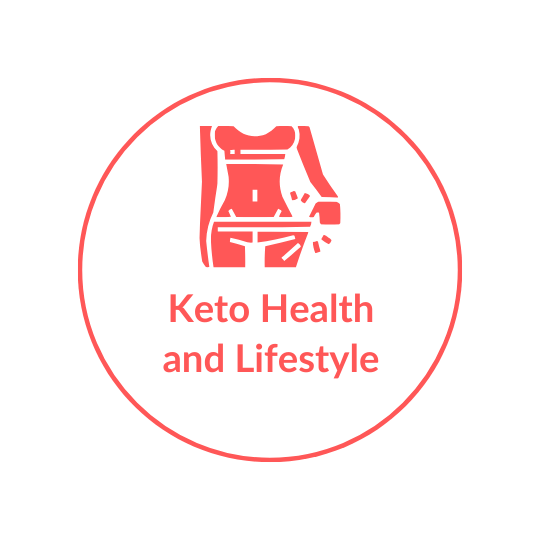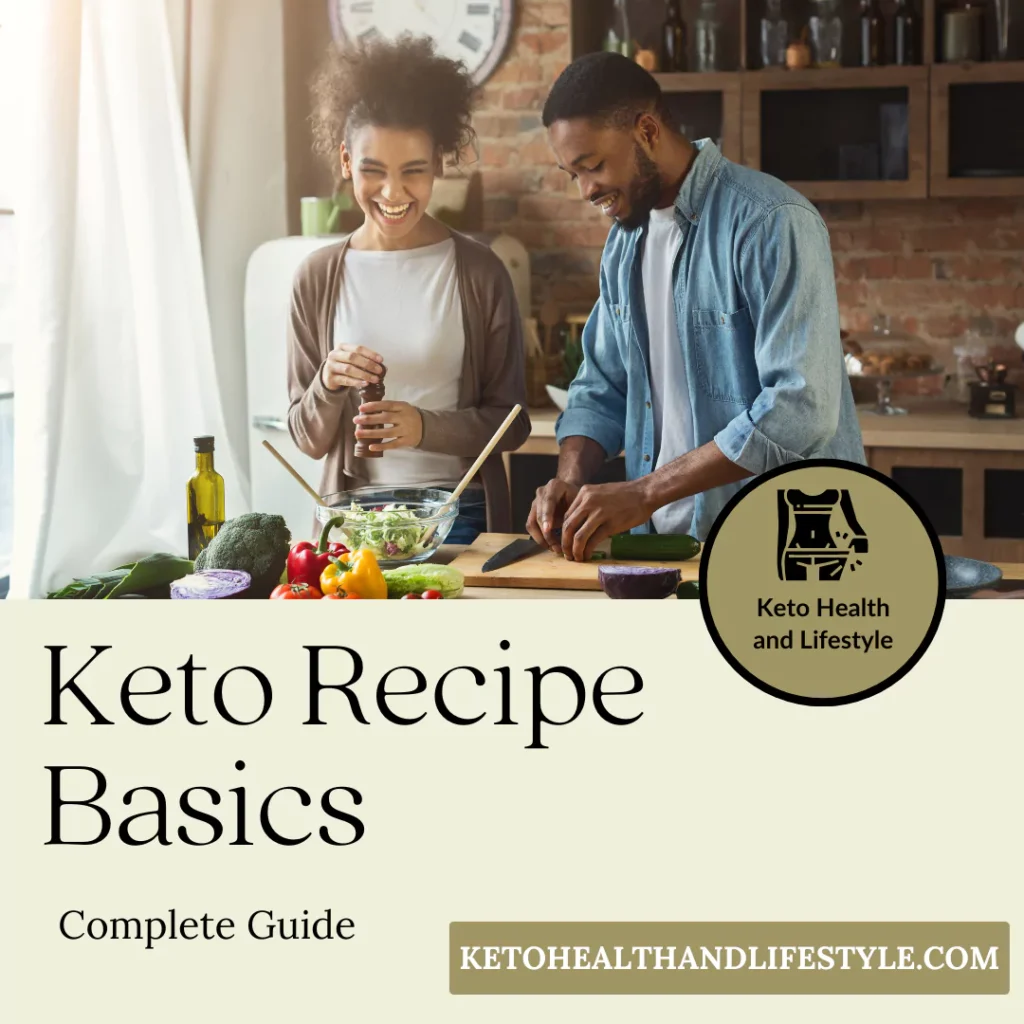This post may contain affiliate links which means I may receive a commission for purchases made through links. Learn more about policies on my about page.
Introduction to Keto Recipe Basics:
Imagine transforming your favorite high-carb dishes into keto-friendly masterpieces that not only taste amazing but also keep you in ketosis. Sounds too good to be true, right? Well, buckle up, because that’s exactly what you’re about to learn!
When I first started my keto journey, I felt like I was fumbling around in a culinary dark room. Sure, I knew the basics – eat lots of fat, moderate protein, and very few carbs. But turning that knowledge into delicious, satisfying meals? That was a whole different ballgame.
Here’s the thing: understanding the ins and outs of keto recipe basics isn’t just about following a diet – it’s about unlocking a whole new world of culinary possibilities. It’s about learning how to work with new ingredients, mastering techniques that bring out the best in low-carb foods, and creating a Keto meal plan that keeps you energised and satisfied.
In this guide, we’re going to dive deep into the art and science of keto cooking. We’ll explore everything from the fundamental principles of keto macronutrients to advanced cooking techniques that’ll make your taste buds dance (without kicking you out of ketosis, of course).
By the time you finish reading, you’ll have the knowledge and confidence to:
- Transform high-carb recipes into keto-friendly delights
- Stock your pantry with essential keto ingredients
- Master key cooking techniques specific to low-carb, high-fat cuisine
- Plan and prep meals like a pro
- Troubleshoot common keto recipe issues
So, whether you’re a keto newbie still trying to figure out what MCT oil is, or a seasoned low-carb warrior looking to up your game, this guide has something for you. Let’s dive in and start cooking up some keto magic!
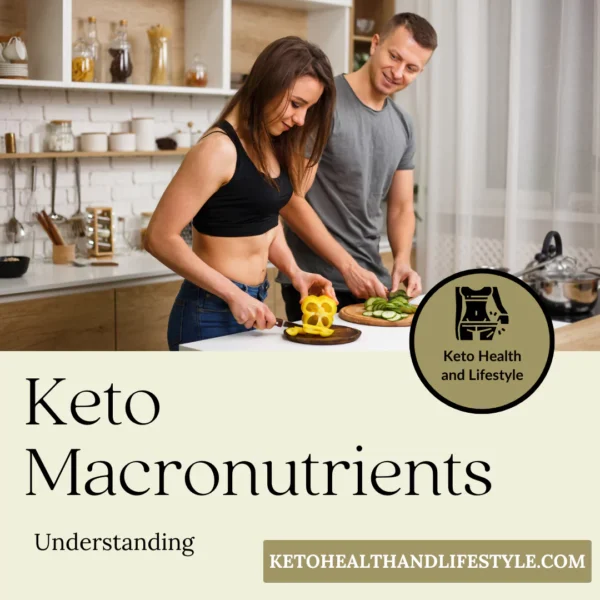
Understanding Keto Macronutrients
Alright, let’s talk macronutrient ratios! When I first heard the term “macronutrients,” I thought it was some kind of fancy science jargon. Turns out, it’s just a fancy way of saying “the big three” – fat, protein, and carbs, and, on keto, getting these right is crucial.
Fat: The Star of the Show On keto, fat is your new best friend. We’re talking 70-75% of your daily calories coming from fat. It’s daunting at first to eat that much fat – it felt like going against everything I’d ever learned about dieting! But here’s the deal: fat keeps you full, provides steady energy, and helps your body switch into fat-burning mode.
Protein: The Goldilocks Nutrient! Protein is important, but it’s all about finding that “just right” amount. Aim for about 20-25% of your calories from protein. Too little, and you might lose muscle. Too much, and it could kick you out of ketosis.
Carbs: The Supporting Actor. Here’s where keto really differs from other diets. You’re looking at just 5-10% of your calories from carbs, which usually translates to 20-50 grams per day. We’re talking net carbs here – that’s total carbs minus fibre. When you first start it’s tricky tracking all the carbs, but as you create more meals and find what you like you tend to go with the flow and the cooking comes naturally.
Tracking Macros in Recipes for a Ketogenic Diet
When you’re working with keto recipes, paying attention to macros is key. Here are some tips I’ve picked up:
- Use a food scale: It’s a game-changer for accuracy.
- Look for recipes that provide macro breakdowns.
- Use a tracking app to input ingredients and get macro totals.
- Don’t stress over hitting exact percentages every day – aim for balance over time.
Remember, these ratios are guidelines, not hard and fast rules. Some people do better with slightly more protein, others with fewer carbs. It’s about finding what works for your body.
Essential Keto Cooking Techniques
Now that we’ve got the macro basics down, let’s talk about how to actually cook this way. Trust me, there’s more to it than just throwing a stick of butter on everything (though that’s not a bad start!).
Fat Adaptation in Cooking Methods – One of the biggest shifts in keto cooking is moving from low-fat to high-fat methods.
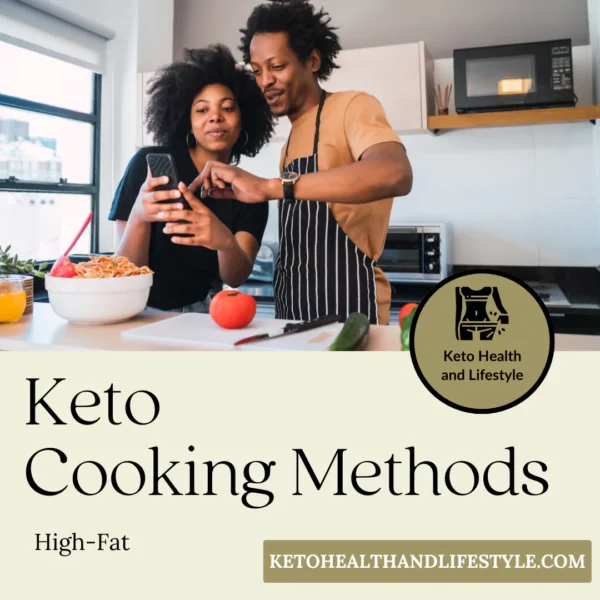
Keto High-Fat Cooking Methods:
- Sautéing in healthy oils: Olive oil, avocado oil, and coconut oil are your new go-to’s.
- Basting: This technique keeps meats juicy and ups the fat content.
- Fat-based sauces: Think hollandaise, béarnaise, or a simple butter sauce.
Replacing High-Carb Ingredients – This is where the magic happens. Learning to swap out high-carb ingredients for low-carb alternatives opens up a world of possibilities.
Some of my favourite high-carb alternatives:
- Cauliflower for rice or potatoes
- Zucchini noodles for pasta
- Almond or coconut flour for wheat flour
- Erythritol or stevia for sugar
Pro tip: Don’t expect these substitutes to taste exactly like their high-carb counterparts. Appreciate them for what they are, and you’ll enjoy them much more. As your diet progresses your taste will change and you will appreciate simpler foods more than you have ever done before.
The Importance of Proper Seasoning When you cut out carbs, you might find that your taste buds need a little extra excitement. That’s where seasoning comes in. Don’t be shy with herbs and spices!
Some keto-friendly herbs and spices/seasoning:
- Garlic powder
- Smoked paprika
- Cumin
- Fresh herbs like basil, cilantro, and parsley
It’s easy to make the mistake of under-seasoning food when cooking keto meals. Everything tasted bland until I learned to amp up the flavours! Pink Himalayan sea salt is recommended along with ground black pepper.
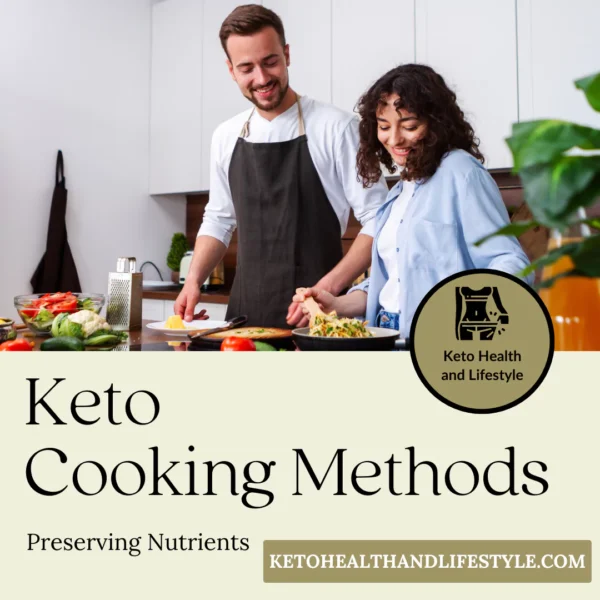
Cooking Methods That Preserve Nutrients On a Keto Diet:
Every nutrient counts! Here are some low-carb cooking techniques that help retain those precious vitamins and minerals:
- Steaming: Great for veggies, fish, and even some desserts.
- Slow cooking: Perfect for tough cuts of meat and making them tender.
- Grilling: Adds flavor without extra carbs.
- Raw preparations: Think salads, sashimi, or carpaccio.
Remember, the goal is to nourish your body while staying in ketosis. These cooking methods help you do just that.
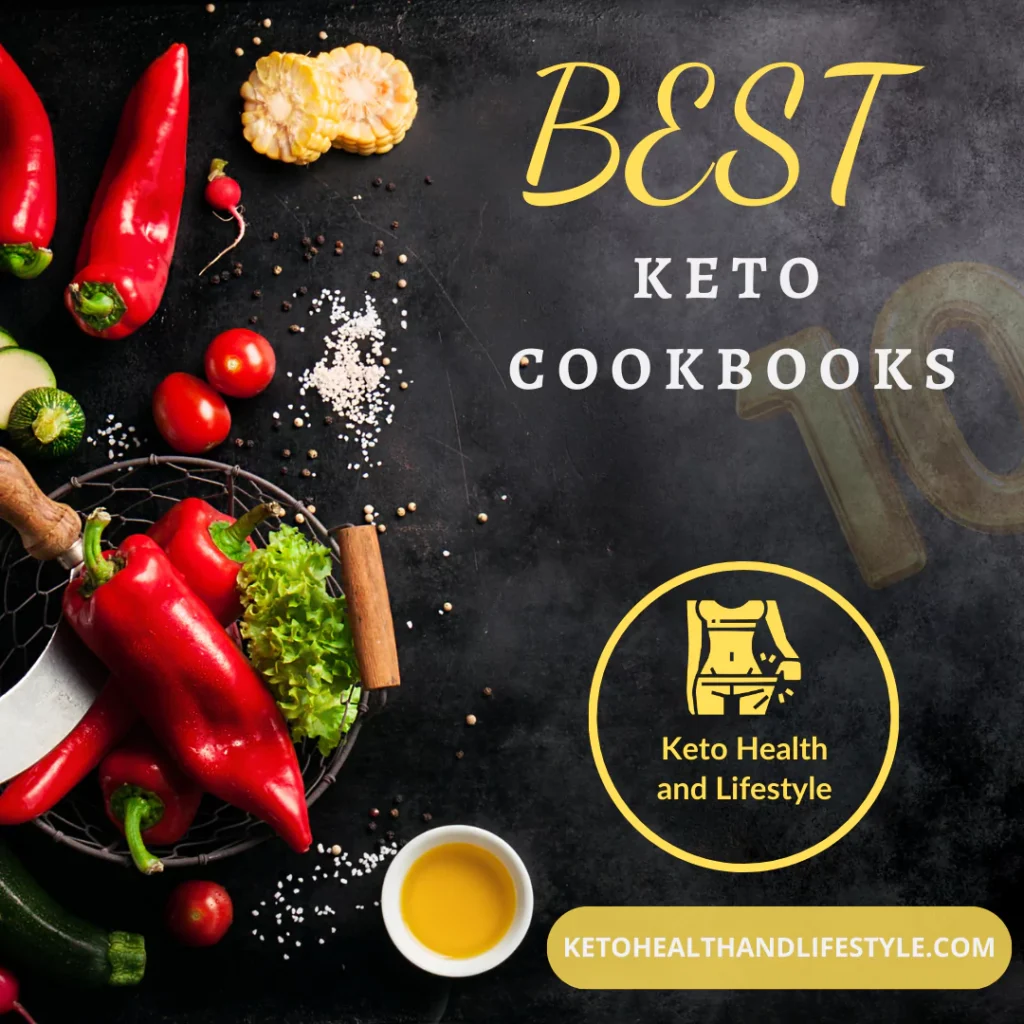
Recommended Reading: Best Keto Cookbooks of 2024 top 10
Must-Have Keto Ingredients for Your Pantry
Alright, let’s talk pantry essentials for Keto meal planning. When I first started keto, I felt like I was learning a whole new language in the grocery store. But trust me, once you’ve got these basics down, you’ll be whipping up keto-friendly meals like a pro.

Healthy Fats and Oils
These are the backbone of your keto kitchen. Stock up on:
- Extra virgin olive oil
- Coconut oil
- Avocado oil
- Grass-fed butter
- Ghee (clarified butter)
Low-Carb Flour Alternatives
Saying goodbye to wheat flour doesn’t mean saying goodbye to baked goods. Here are your new baking besties:
- Almond flour
- Coconut flour
- Flaxseed meal
- Psyllium husk powder
Word of caution: these don’t behave exactly like wheat flour. It’ll take a few flat, soggy “breads” before you get the hang of it! As far as Keto flour substitutes go they’re pretty good!
Keto-Friendly Sweeteners
Who says you can’t enjoy sweet treats on keto? These sweeteners will keep your sweet tooth satisfied without the carbs (just be mindful of how much you use!):
- Erythritol
- Stevia
- Monk fruit sweetener
- Allulose
Pro tip: Different sweeteners work better for different recipes. Don’t be afraid to experiment!
Essential Herbs and Spices
These are your secret weapons for making keto food exciting:
- Sea salt (Pink Himalayan is recommended)
- Black pepper
- Garlic powder
- Onion powder
- Smoked paprika
- Cumin
- Dried herbs (oregano, thyme, rosemary)
Get these Keto pantry essentials sorted and you’re making a good head start.
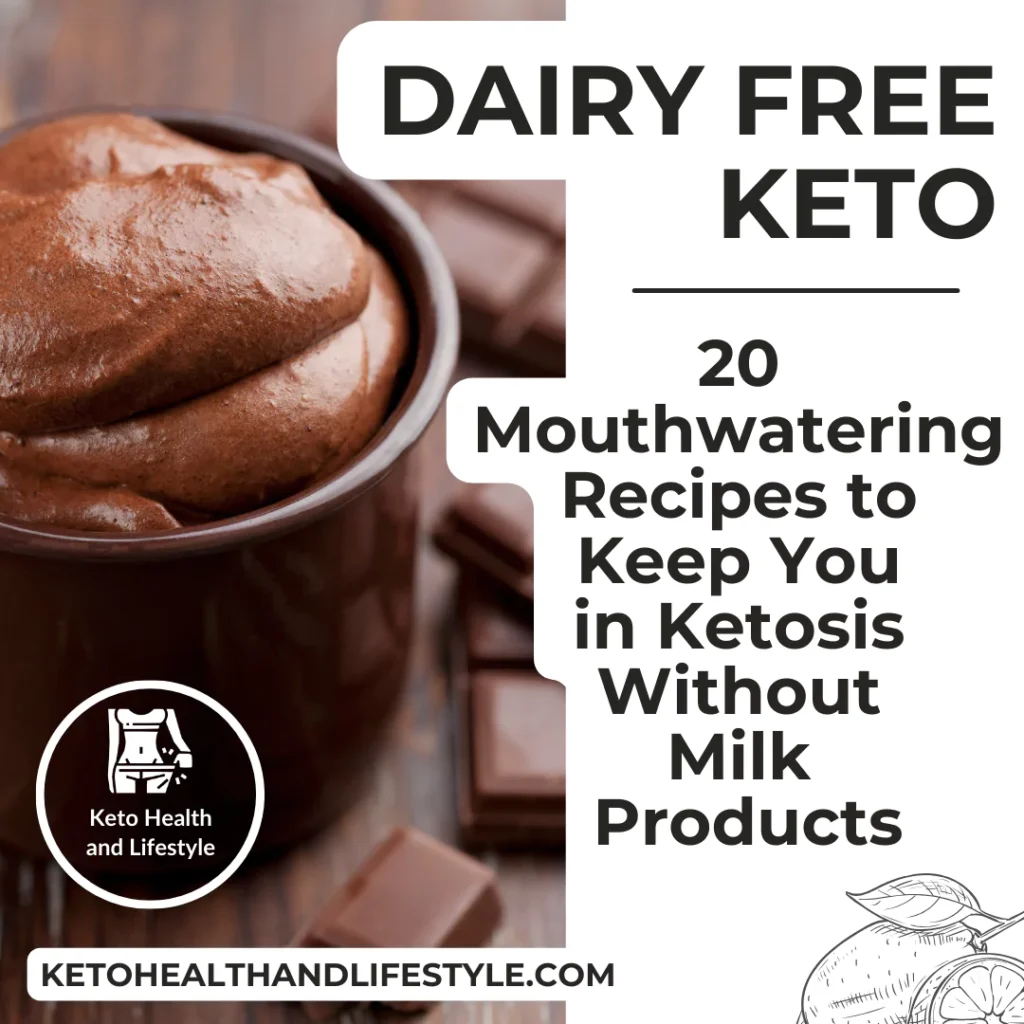
Recommended Reading: dairy-free-keto-recipes
Protein Sources
Last but not least, you’ll need some quality proteins:
- Eggs (nature’s perfect keto food!)
- Chicken
- Beef
- Fish (salmon, tuna, sardines)
- Pork
- Full-fat Greek yogurt
- Hard cheeses
Remember, variety is key. Don’t get stuck eating the same things day in and day out. Mix it up and keep your meals interesting! Explore top keto cookbooks for meal planning.
With these ingredients on hand, you’ll be ready to tackle just about any keto recipe that comes your way. Happy cooking!
What are the top 10 keto foods?
Avocado, bacon, eggs, butter, cheese, nuts, seeds, olive oil, berries, leafy greens.
- Keto Wine: Best Zero Carb Wines 2025 Guide for Low-Carb Living

- Keto Crunch Cereal: Is Catalina Crunch Keto Friendly? Nutrition Facts & Review 2025

- Is Dragon Fruit Keto Friendly? Carbs & Keto Guide for 2025 Fitness and Diet Success

- Is Jicama Keto Friendly? Nutrition Facts, Health Benefits & Easy Recipes for Keto 2025

- Is SkinnyPop Popcorn Keto Friendly? Honest Carb Guide & Nutrition 2025

- Keto Diet Kitchen Essentials: 7 Helpful Things I Can’t Live Without!

